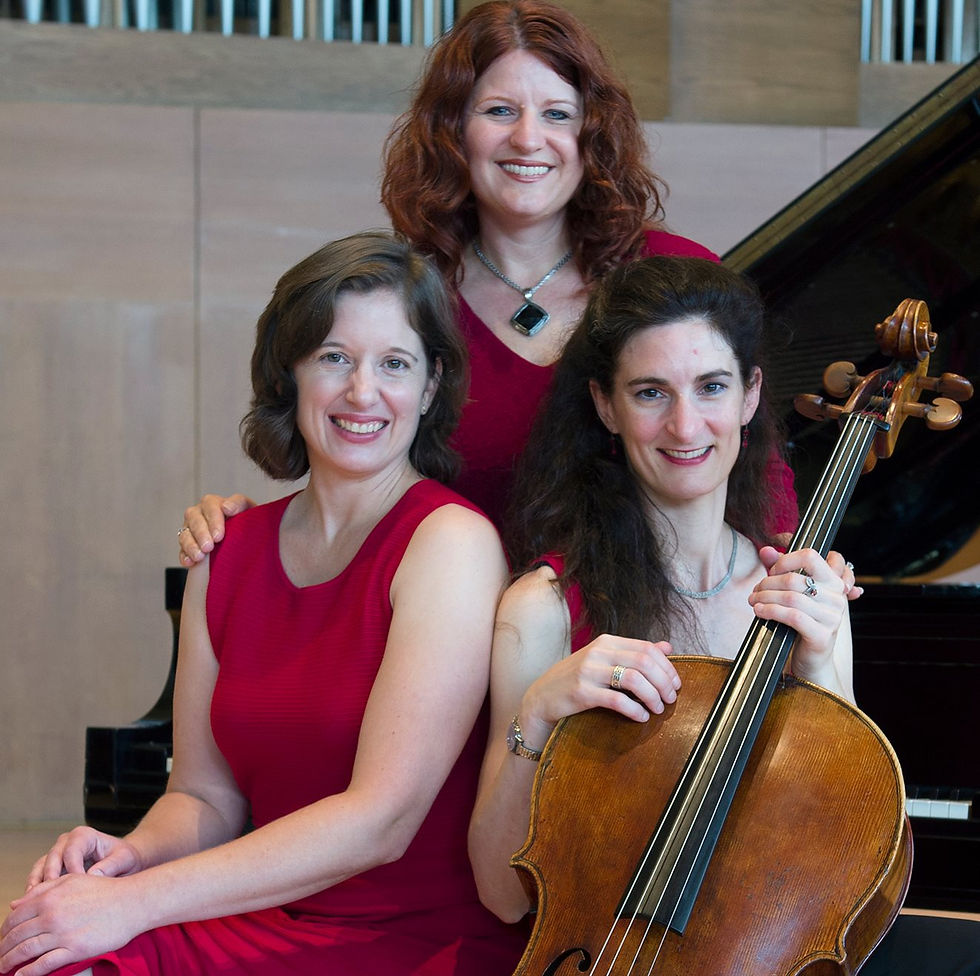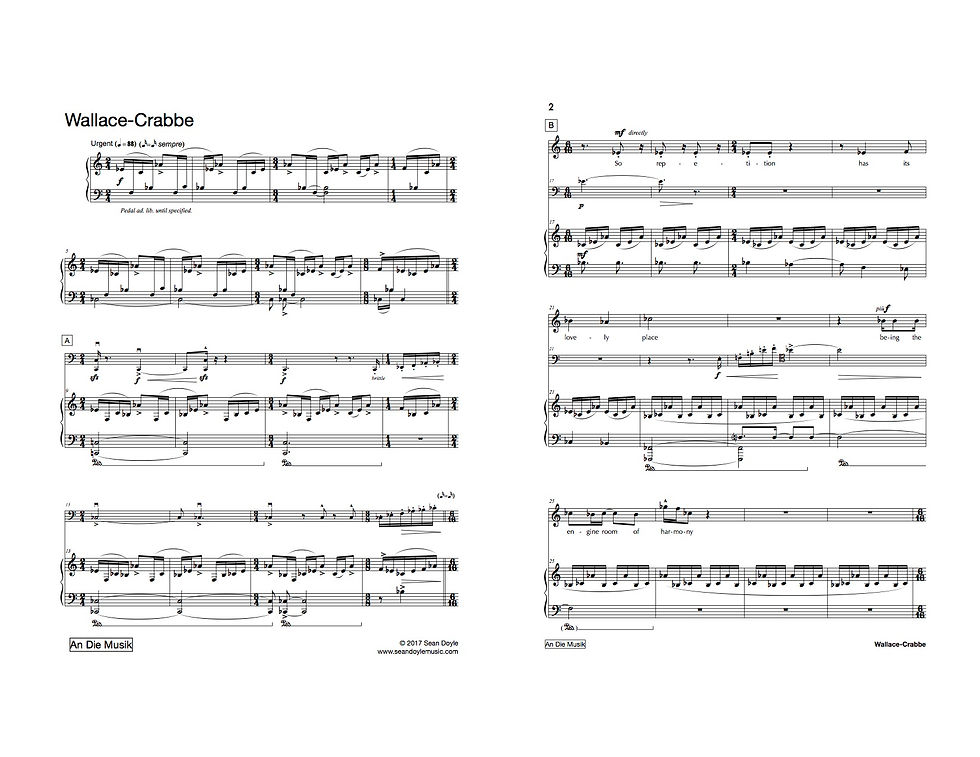"An Die Musik" premiered in Fredonia
- seandoylemusic
- Dec 4, 2017
- 4 min read
Tomorrow, it'll be a month since I traveled back to my old stomping grounds of Fredonia, NY to hear my incredible friends, the ANA Trio, premiere a new work I've written for them. The trio - soprano Angela Haas, cellist Natasha Farny, and pianist Anne Kissel Harper - had asked me to write them something back when I was still teaching at Fredonia. Despite a move down to DC, I never lost touch with this project, and sketches piled up on my writing desk over the better part of two years. I had known and heard these performers for quite a while, and so I wanted to write them something really special. The trust I had in them, knowing the kind of passion and commitment they bring to all of their artistic undertakings, also gave me the confidence to try new things and challenge myself compositionally in ways that I wouldn't have approached otherwise.

An Die Musik is an eight-movement song cycle in mobile form. Of the eight movements written, the performers choose six or seven to preset in performance, and in an order of their choosing (within a few basic guidelines). There are four more traditional settings of poems, each titled "An die Musik", that span three centuries: a poem in German by Franz von Schober (1796 – 1882), perhaps best known in its setting by Franz Schubert, a poem in German by Rainer Maria Rilke (1875 – 1926), translated in English by Stephen Mitchell (set separately in English and German), and a poem in English by Chris Wallace-Crabbe (Australian poet laureate, b. 1934). Accompanying these three songs are four movements titled “Ding” (‘thing’ in German), which serve as musical objects that comment, reflect, or develop upon the materials, sentiments, and ideas from the three song settings. The voice is treated instrumentally, and one of the "Ding" movements is only for piano and cello. As any physical mobile has a fixed part (think of the rod in a Calder that affixes it to the ceiling), the cycle has a fixed point as well: the fifth movement performed for every performance is the Wallace-Crabbe setting.

The purpose of the mobile construction is to allow the performers to collaborate in the large-scale construction of the work. The dramatic shape of the entire cycle is wholly in the hands of the performers, based on their interpretation and ordering of each movement. In this way, I intend for the piece to be a dynamic work that can be shaped into a number of different emotional or narrative experiences for both performer and listener - and thus a malleable piece in terms of programming. I plan on writing more about my process for planning a work with an indeterminate element in a future post... needless to say, I found this to be a considerable challenge to my compositional thinking - but a true labor of love nonetheless.
The occasion for this musical homecoming was made all the more poignant and meaningful when I found out that the trio was programming a new work by my dear friend and compositional mentor Donald Bohlen on the same recital. "Doc", as he's called by all who had the privilege of learning from him, taught at SUNY Fredonia from 1974 to 2007. As chair of composition, he cultivated a truly unique, rigorous curriculum for the training of young composers devoted to the development of one's personal musical and intellectual values - a curriculum broadly recognized as being singular in its achievement. He also founded, as faculty advisor, the ETHOS New Music Society, a student-run group committed to the promotion of student works and new music in western New York. ETHOS celebrates its 40th anniversary this year and continues to flourish on the Fredonia campus.

Doc and I keep in touch regularly but had not been in contact much in the months prior to the recital (no doubt we were both at a fever pitch trying to get the writing done!). So, imagine the surprise when we arrived for the dress rehearsal and found that our two pieces, devised independently, shared a surprising affinity of common traits! Donald had composed settings of Goethe for the trio, in a work titled Künstlers Abendlied. Both works feature settings of German romantic poetry and both works meditate on man's complicated but ultimately grateful, blissful relationship to art. The trio thought we had corroborated on this, but we really had no idea. At a spare moment in the rehearsal, I turned to Doc and said "Man, I can't believe it! How wonderfully strange that these pieces share so many similarities! It's so surprising!" Doc smiled warmly - the patient, mentoring smile I had seen so many times before - and said "It doesn't surprise me at all". I can't begin to express my gratitude to the ANA trio- not only for the patience in waiting through the long gestation of my piece, but for their steadfast devotion in bringing the work to such beautiful life. Gratitude as well for the opportunity for my music to share space in an evening with the music of my dear teacher - music that has such vitality, such cogency, such incredible communicative spirit, that I continue to learn from it every day since I first heard it come to life in that rehearsal. The incredible experience of this "homecoming" recital, captured in video below, gave me a much-needed rejuvenation amidst these trying times. Give our works a listen - my work starts at 25 minutes 25 seconds; Künstlers Abendlied immediately follows it; bookending the two premieres are transcriptions of Schubert songs, including (to my delight) An die Musik, D. 547. "Du holde Kunst, ich danke dir dafür..."
Recorded in concert 5 November 2017, Rosch Recital Hall, SUNY Fredonia



Comments